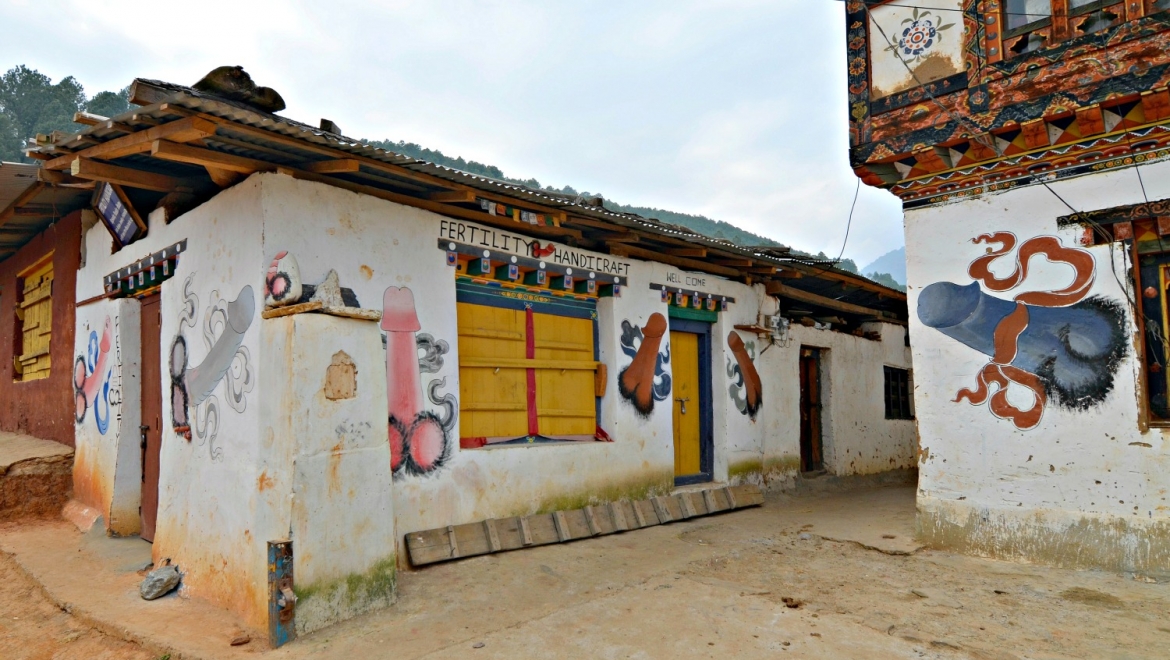The landscape of Bhutan is punctuated with an impeccable wealth of indigenous dwellings. These traditional houses cannot go amiss by any traveler. With their unique colours and features, they will immediately attract you. On the exterior, the outer walls are often painted black or brown with motifs of clouds, lotus flowers or other auspicious signs. The intricate wooden windows do not have glass panes, instead, they are covered with wooden shutters, as preferred in the Bhutanese culture. Larger houses are adorned with elaborate cornices and wide overhanging eaves. There is an overwhelming, unique tradition of hanging, painting or erecting images or sculptures of the phallus (penis) in the corners of eaves of the houses and one inside too. It is believed to bring fertility and prosperity.
The Earth Architecture of the traditional Bhutanese homes is cultivated and inspired by the enriching essence of nature. They follow the concept of the front courtyard. The covered or semi-covered space is multifunctional and can be used to grow vegetables, agricultural produce, keep animals, and outdoor functions and activities. The house is not built according to a marked plan. All spaces allocations and measurements are done by the lead carpenter physically using body parts and insight from a spiritually inspired lama. There is no use of nails or iron, all joints are made using wooden pegs. Conventionally, the houses are two to three-storeys with ground floor kept for livestock, the first story serves for domestic household activities, housing the bedroom, kitchen, and store, and the third storey is used for religious ceremonies and rituals.
Vernacular materials, available conveniently and abundantly are used for construction. The material and technique used change mildly with the variation in altitude and climate. Houses in southern Bhutan are laid in straight rectangular spaces and walls are made of rammed earth or stone masonry polished with plastered.
The attic walls are made of concisely woven bamboo matting and the roof above is ridged and elevated for proper air circulation. There was no provision for chimneys in traditional houses, this led to soot from the kitchen settle over the wooden frames of doors and windows, which in return protected them from insects. In the central Bumthang region, the houses are made in stone masonry, the eastern regions unveil the practical stilt bamboo lodges. The north in Bhutan is ruled by nomadic herders living in their dry-stone walled bastions. People in villages prefer to live in hamlets of 5 to 15 houses for a sense of mutual protection against wind and cold.
These smart and efficient settlements are the pride of Bhutan. For keen travelers, these houses are a threshold to the traditions and culture of the natives. The practice of farm stays is very common in Bhutan and the locals welcome visitors with warmth and open hearts. The hospitality is heart-whelming and the closer look at the lifestyle, food, and clothes is thoroughly worth experiencing.
‘- Aarushi





Add Comment